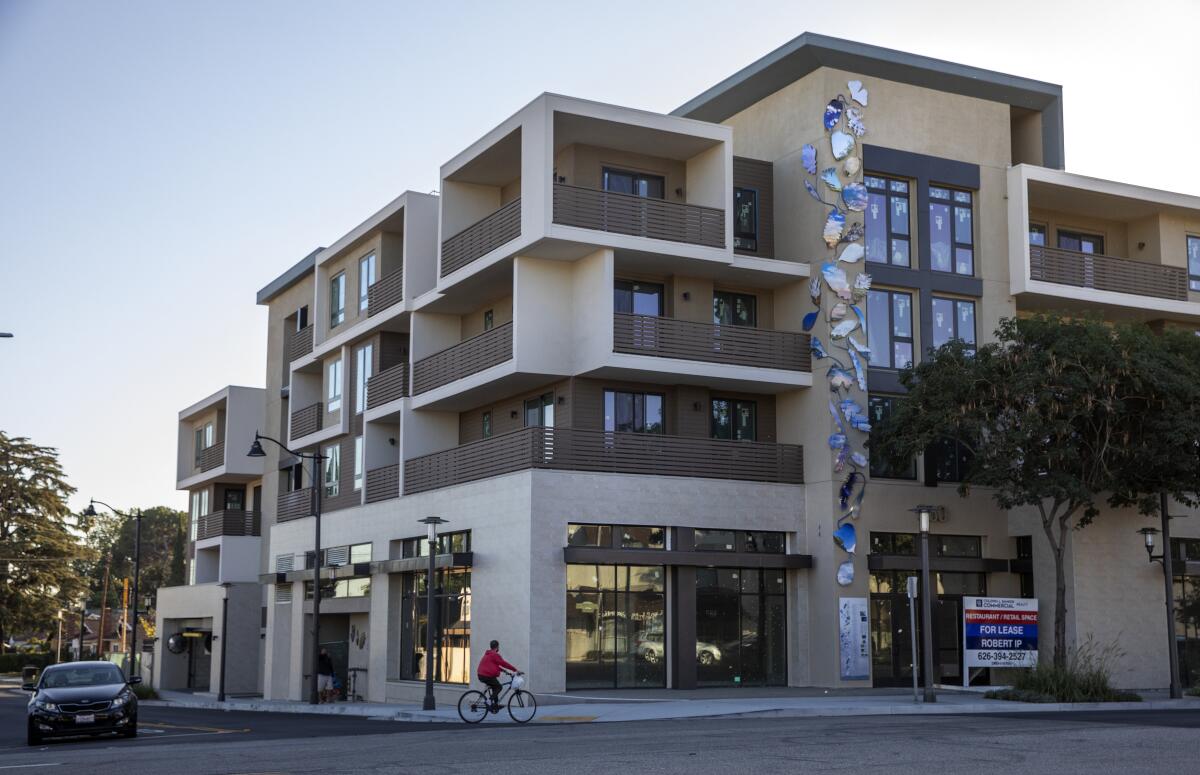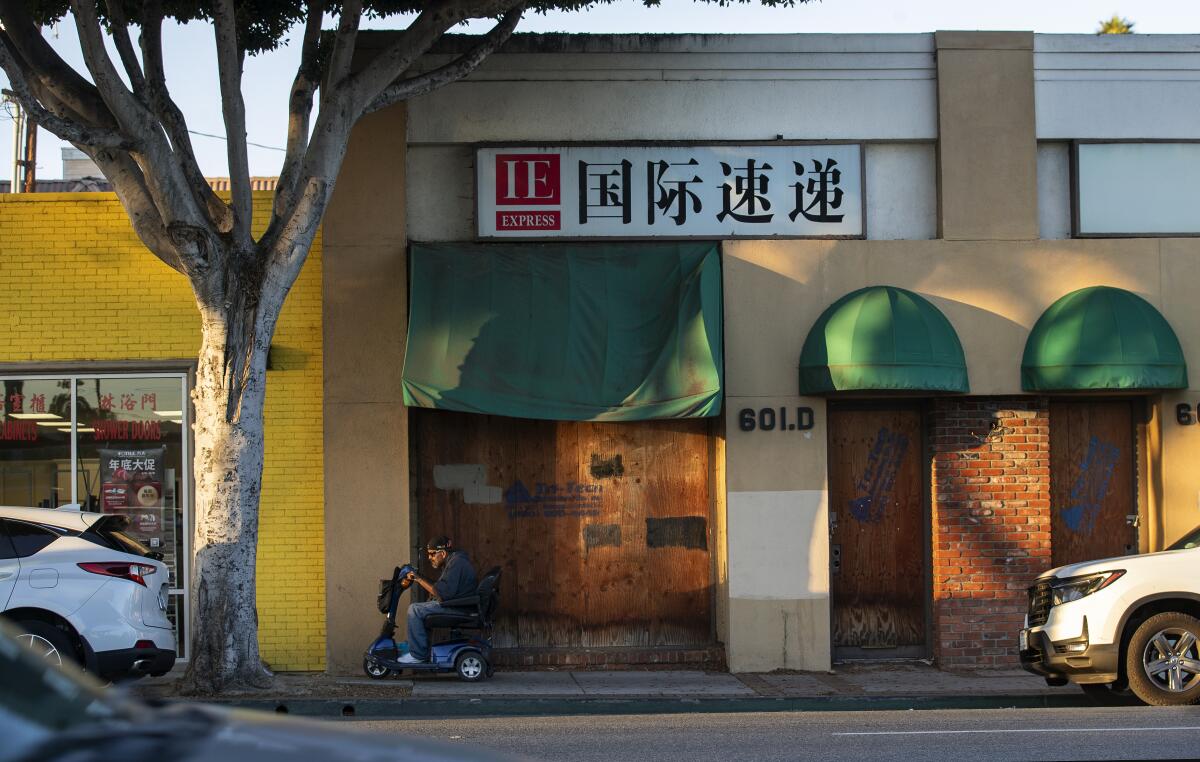Once flush with Chinese tourism dollars, San Gabriel Valley searches for a new normal

- Share via
When my reporting takes me to the San Gabriel Valley, I often stop at Jim’s Bakery for egg tarts, Ba Le for banh mi and Alice’s Kitchen for rice rolls, if my diet can justify it.
But they were all closed Tuesday, a common day off for restaurants — especially for mom-and-pop businesses where family members work every shift. A growing number, however, seem to be closed one or more days per week in the immigrant neighborhoods of the San Gabriel Valley, even those that are popular and established.
It’s one possible sign of the challenging economic headwinds ahead for the region. Food costs have not recovered from the pandemic’s supply chain disruptions. California’s new minimum wage requirements, while putting needed money in the hands of wage workers, squeeze small businesses looking to expand their hours. And delivery apps have taken a permanent chunk out of dine-in’s business.
Compounding the problem is the growing cost of doing business in brick and mortar businesses. Waldo Yan opened 626 Hospitality, a specialty ice cream shop, in an Arcadia strip mall two weeks ago; he has also decided to close on Tuesdays. It’s hardly a day of rest, however, as he said he spends the time doing paperwork, inventory and other work for the restaurant.

“Days off are a distant fantasy at this point,” Yan said. “Weekdays are a huge tossup.”
The San Gabriel Valley’s popularity with Chinese investors, tourists and home buyers has always helped buoy the region against domestic economic shocks. But now a dramatic downturn in the Chinese economy could add to the area’s challenges.
The pandemic made travel between the U.S. and China more difficult, and that has “slowed down business in a culture that prefers to do everything face to face,” said Paul Thomas, deputy CEO of the San Gabriel Valley Economic Partnership. “Chinese businessmen establish trust by having dinner, and trying to do that online, through Zoom, it’s kind of a nonstarter.”
In China, youth unemployment rose to 21.3% in June; the government stopped reporting the figures not long after. A Communist Party that built its popularity on double-digit growth in gross domestic product now faces an economy that grows at the same rate of any mature economy such as the U.S. — 3% in 2022.

That economic pressure has produced a political crackdown on merchants, entrepreneurs and private wealth. It is no longer such a certainty that China will dethrone America economically, according to recent International Monetary Fund reports. And U.S.-China relations are still recovering from Trump-era tariffs, tough talk and pandemic finger-pointing.
“It hasn’t been this bad since Nixon’s trip,” said Clayton Dube, director of USC’s U.S.-China Institute, referring to the then-president’s historic 1972 visit that was credited for helping thaw relations between the two countries. “This is a half-century low point, and I’m afraid this is the new normal.”
University of California campuses have been accepting fewer out-of-state and foreign students. Admissions for international students from China were down 22% last year from 2019. Dube said that the Chinese student population at USC had remained steady.
And while Chinese tourists have begun to return to California, there are only one-third as many as in 2019, according to the Los Angeles Tourism and Convention Board. That’s when more than 1.5 million visitors came and plowed in excess of $4 billion into the state economy.

An estimated 10 to 15 tourism agencies in Rosemead have closed, according to the Ray Jan, deputy director of the Rosemead Chamber of Commerce. Many of the owners of businesses I’ve spoken with over the last decade have closed.
Meanwhile, several hotels are under construction or have recently completed construction, built in anticipation of tourism that might never materialize. Some of those were funded by the EB-5 investor visa, which offers a path to a green card in exchange for a large investment in an American business. But that funding mechanism has largely faded too, according to interviews with developers, attorneys and city leaders.
The flow of Chinese capital, goods and tourism to California in the past two decades has helped transform suburbs into boom towns, erected luxury hotels and billboards for $10,000 watches next to mom-and-pop cellphone shops and liquor stores.
But it wasn’t clear if all the Chinese people who had bought American homes planned to live in them, and if the Chinese students attending local universities would seek American jobs. Many of the students I’ve spoken with over the years hoped to stay and make a life here, but almost all of them eventually returned to China, many to take jobs in family businesses.
I think all of that could change as the economy tightens in China. As fewer Chinese people are able to identify with their government’s increasingly authoritarian policies, more immigrants may be trying to make their lives in the U.S.
And herein lies the real promise and opportunity in the San Gabriel Valley.
Majority Latino and Asian, the region offers a preview of California and America’s future. In a time when it’s increasingly difficult to get reliable news out of China, the relationships here can help us see through the distortions of political rhetoric and social media and form our own relationships with Chinese culture and people.

Even as international investment falls off, local business is returning to pre-pandemic levels, some business boosters say. In Monterey Park, the old Shun Fat supermarket has become a remodeled GW Supermarket — with floors of freshly scrubbed concrete and neatly stacked produce.
NBC restaurant, a venerable standby for dim sum, is packed on Friday evenings again, said Monterey Park Councilmember Henry Lo. Even the old Lincoln Hotel underwent a renovation in 2019.
“We’re a city in transition. I would say we’re still an international city, but also a city trying to find it’s place in a post-pandemic world,” Lo said.
More to Read
Sign up for Essential California
The most important California stories and recommendations in your inbox every morning.
You may occasionally receive promotional content from the Los Angeles Times.














